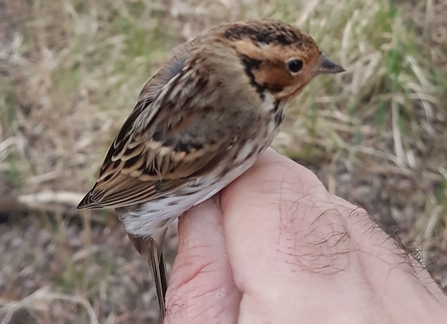A Little Bunting has been recorded at Herts and Middlesex Wildlife Trust’s Stanborough Reedmarsh Nature Reserve, near Welwyn Garden City. It is the first time the scarce visitor from Russia has been recorded in Hertfordshire since 2007, when it was spotted at Amwell, near Ware. Prior to that, there are just two other records of the bird being sighted in the county.
Little Bunting is a small and compact bunting, with a short, slim tail, a reddish-brown head and a heavily streaked, warm brown back with white, streaked underparts. A majority of sightings of Little Bunting in the UK are recorded during autumn but this appears to be one of an increasing number to be found in winter finch and bunting flocks.

